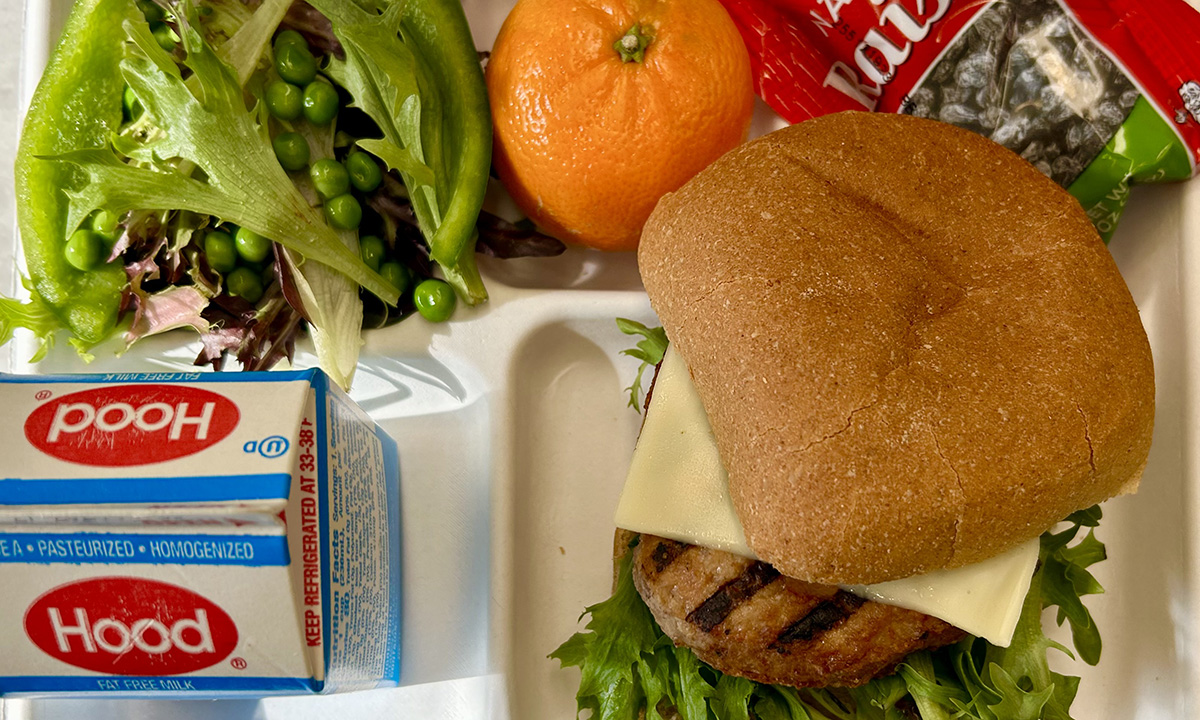The True Impact of School Meal Funding Cuts: More Hunger, Less Learning
Wilson: Reductions that Congress and the White House are considering would make it harder for students to learn and thrive.

Get stories like this delivered straight to your inbox. Sign up for The 74 Newsletter
One in five children in the U.S. faces hunger, according to a Feeding America report. And now, Congress is deliberating making hunger worse.
A sweeping plan to slash federal spending would gut vital programs — including cuts to those feeding low-income kids at school and at home. While Congress has yet to propose direct cuts to a critical federal school nutrition program, its budget proposal includes a $12 billion reduction in funding for the Community Eligibility Provision (CEP). Since 2010, CEP has enabled local school districts to partner with the federal government to serve free breakfast and lunch to all students at lower-income schools without collecting individual applications. This program addresses critical gaps in the system to nourish children.
Additionally, the House is advancing $290 billion in cuts to the Supplemental Nutrition Assistance Program (SNAP), the largest proposed cuts to SNAP in history, worsening food insecurity for millions of families. Many children qualify for free school meals automatically if their families receive SNAP. If Congress defunds SNAP and children lose access to these programs, they will also lose their direct and easy access to free or reduced-price school meals. When support for both school meals and food at home is weakened, the safety net begins to fall apart.
These proposed draconian cuts seek to balance the federal budget on the backs of children and low- and middle-income families, while undermining food systems that support educational readiness and a thriving economy.
As the executive director of The Urban School Food Alliance, which represents 18 of the largest school districts in the country, I am concerned, like millions of others, about this funding being eliminated. In my day-to-day work, I hear from families about how school meals have changed the trajectory of their children’s lives.
At a recent haircut appointment, I comforted my hairdresser when she came to tears asking me if school meals would be cut or cost more. She and her husband are still trying to recover from their losses due to service industry closures related to COVID. They both work multiple jobs and after having to sell one car, the free school meals program is what enabled them to keep paying the rent for their apartment.
For her family and millions more, decisions from Congress to withdraw its commitment to combating childhood hunger would jeopardize children’s health, stability, and, ultimately, academic success.
Hunger has pernicious effects on a child’s trajectory in school and life.
Undernourished children struggle to focus in school, leading to lower academic performance, higher absenteeism, and increased emotional and behavioral problems. Children are less likely to reach their full potential as adult members of society without consistent access to the nutrition that healthy school meals provide.
Our national school meal programs cost about $23 billion annually — less than half a percent of the total federal budget — but provide nearly $40 billion in human health and economic benefits. As the national conversation around healthy eating moves front and center, the value of school meals should be celebrated.
In another economic blow, the Trump administration’s decision to cancel $1 billion in USDA programs supporting local food purchases further underscores the compounded danger of these cuts. These programs don’t just provide meals — they sustain American farmers, ranchers, and local food economies, ensuring a flow of healthy food to schools and food banks. Cutting this funding would intensify food insecurity and hinder our agricultural economy at a time when both are more critical than ever.
These are not feel-good talking points; these are issues of national security. A healthy, well-educated population produces a strong, productive nation. And a resilient, local food system ensures a robust, plentiful supply chain that readies itself for natural disasters and other times of crisis.
Because of the universal free meals provided through the CEP program, 44% of California’s food-insecure families who previously didn’t qualify for federal assistance now have access to reliable, daily nutrition. In addition to reducing the stigma of free meals, the program minimizes administrative burdens and helps families, who often hold multiple jobs yet struggle with food insecurity. Another benefit is that the program reduces error rates and ensures the neediest students receive the benefits. This essential and enriching student program is now at risk.
A new analysis found that the proposed changes to SNAP and CEP could mean an estimated 832,000 children would need to start filing school meal applications, based on a sample of 37 states and the District of Columbia. The analysis also found that at least 18 million students nationwide could face higher costs for school meals.
Any proposed disinvestments in CEP and SNAP move us in the direction toward scarcity, worsening outcomes and harm to working families. The ripple effects of repealing these vital programs will damage communities and undermine our children’s health for years and generations to come.
Budgets are a statement of our values. Families rely on their Congressional representatives to protect, advocate, and represent their interests, including a commitment to fiscal responsibility. Still, there is no “budget reconciliation” if it is negotiated at the expense of our children and families.
While fiscal responsibility matters, we cannot afford to undercut investments in programs that directly support our children, economy and workforce. Instead of slashing investments that nourish hungry children at school and support our American farmers, federal leadership should continue to invest in programs like CEP and SNAP that have years of well-documented success in solving some of our country’s most complex issues.
This is the time for parents, educators, and communities to speak up against these highly damaging budget proposals. Over the past decade, we have made significant strides in bringing locally sourced and freshly prepared meals to our schools, improving children’s overall health and well-being. We must stand with parents, school nutrition directors, educators, and farmers fighting to protect these essential programs.
The choice is clear: We can either defund our children’s futures, subject millions to hunger and exacerbate the economic hardship of millions of families. Or we can invest in all Americans by championing their health, education, and potential — starting with the unwavering commitment to nutritious school food that every child needs to grow, learn, and thrive.
Regardless of political ideology, we can all agree that no child should go hungry or be deprived of the opportunity to succeed.
Get stories like these delivered straight to your inbox. Sign up for The 74 Newsletter

;)
